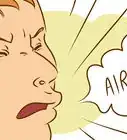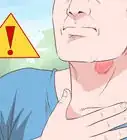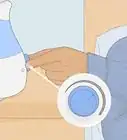This article was co-authored by Alan O. Khadavi, MD, FACAAI and by wikiHow staff writer, Aly Rusciano. Dr. Alan O. Khadavi is a Board Certified Allergist and a Pediatric Allergy Specialist based in Los Angeles, California. He holds a BS in biochemistry from the State University of New York (SUNY) at Stony Brook and an MD from the State University of New York Health Science Center at Brooklyn. Dr. Khadavi completed his pediatric residency at Schneider Children’s Hospital in New York, and then went on to complete his allergy and immunology fellowship and pediatric residency at Long Island College Hospital. He is board certified in adult and pediatric allergy/immunology. Dr. Khadavi is a Diplomate of the American Board of Allergy and Immunology, a Fellow of the American College of Allergy, Asthma & Immunology (ACAAI), and a member of the American Academy of Allergy, Asthma & Immunology (AAAAI). Dr. Khadavi's honors include Castle Connolly’s list of Top Doctors 2013-2020, and Patient Choice Awards "Most Compassionate Doctor" in 2013 & 2014.
There are 14 references cited in this article, which can be found at the bottom of the page.
wikiHow marks an article as reader-approved once it receives enough positive feedback. This article has 19 testimonials from our readers, earning it our reader-approved status.
This article has been viewed 1,207,377 times.
We’ve all been there. A sudden onset of allergies or an annoying cold has left you in a pile of tissues. Not only is your nose full of snot, but it hurts too! Frequently blowing your nose can leave it red, irritated, and dry, but how can you stop this when you can’t stop using tissues? Luckily, there are several ways you can get relief from a chapped nose and prevent further nose blowing, and all they require is a bit of self-care.
Things You Should Know
- Apply an ointment or balm like Vaseline or Neosporin to chapped nostrils to soothe burning and irritation.
- Hold a warm, damp washcloth over your nose to relieve pain and provide moisture.
- Try blowing your nose one nostril at a time to gently release mucus without excessively rubbing your nose with a tissue.
Steps
Reducing Irritation & Chafing
-
1Apply a soothing moisturizer to the outside of your nostrils. Petroleum jellies like Vaseline and ointments like Neosporin can help soothe your irritated nose. Place a small amount of product on a Q-tip, then apply it around the entrance of each nostril. The extra moisture will not only relieve dryness, but it will also create a barrier against irritation from a runny nose.[1]
- If you don't have Vaseline or Neosporin handy, use your regular face lotion. It won't lock in moisture as effectively, but it’ll still give you relief.
-
2Buy tissues with lotion. Splurging on high-quality facial tissue can go a long way toward soothing your nose. Look for products treated with lotion. These are softer on your nostrils and cause less damage when blowing your nose. Less chafing during nose-blowing means less irritation in the long run.[2]Advertisement
-
3Soak your nose with a moist washcloth. If your nose is badly chafed or bleeding, add warm moisture quickly to relieve the pain. Run a clean washcloth under hot water, then gently press it into the nostrils. Tilt your head back, breathe through your mouth, and leave the washcloth in place until it cools to room temperature.
- Apply petroleum jelly or Neosporin to your nose immediately after soaking it.
- Wash the washcloth immediately after using it.
-
4Try blowing your nose less. A runny or congested nose can feel terrible, and you may be tempted to blow your nose constantly. Though it may be hard, fight that urge and blow your nose only when necessary. If a little mucus runs out of your nose, gently dab it away instead of honking on a dry tissue and irritating your nose.
-
5Use a gentle nose-blowing technique to reduce chafing. Instead of taking a deep breath and blowing as hard as you can, blow gently through one nostril and then the other. Continue alternating nostrils until you feel your nose is clear.[3]
-
6Seek medical treatment for allergies.[4] If your runny or irritated nose is caused by seasonal allergies, contact your doctor. They can prescribe allergy medications to help manage and control your reactions. Whether you get allergy shots or take Flonase nasal spray when your nose starts running, treating the underlying allergy will help soothe your nose.[5]
- Keep in mind that oral decongestants tend to make your mucous even dryer, which could increase irritation.
Decongesting Your Nose
-
1Sit in a steamy room. Turn on the hot water in the shower, and close the door to keep all the steam in. Stay in the bathroom for 3 to 5 minutes or until you feel your sinuses clearing up. Gently blow your nose before leaving the room to let everything out.[6]
- To save water, take a hot shower and then blow your nose when you get out.
- If you can access a sauna or steam room, consider heading there instead.
-
2Apply a warm compress to the bridge of your nose. Wet a washcloth and place it in the microwave until it's warm (not burning hot). Place the cloth across your nose and let it sit until it's cooled. The heat will loosen secretions or mucus from the nasal cavity.
- Repeat the process before blowing your nose if necessary.
- Microwaving time will vary depending on your machine, so start with 30 seconds and add 15 seconds at a time.
-
3Flush your nose with saline spray.[7] A quick mist of saline spray can help clear your nasal cavity and sinuses. Spray the bottle twice into each nostril to feel instant relief.[8] Purchase saline spray at your local drug store or pharmacy, or make saline spray at home with the following steps:
- Mix 8 fluid ounces (240 mL) of warm water with 1⁄2 tsp (0.010 c) of salt.
- Buy a suction bulb from the grocery store or pharmacy.
- Dip the end of the suction bulb into the solution and squeeze the bulb.
- Squirt the saline in the bulb into your nose.
-
4Try using a neti pot. A neti pot looks like a miniature teapot and helps clear blocked sinus passages in the nose by flooding warm water through one nostril and out the other. Heat the water to at least 120 °F (49 °C). Then, let it cool to a comfortable temperature and fill the pot. Tilt your head to the left, and pour the water into your right nostril until it drains out of your left nostril.[9]
- Don’t use a neti pot if you live in an area with inadequate water treatment, as using untreated water could put your health at risk.[10]
-
5Drink warm tea throughout the day. The throat and nose are closely connected, so drinking warm liquids can help warm up your nasal passage and help mucus flow more freely. Opt for your favorite tea or try a healing herbal tea if you’re fighting a cold.[11]
- Peppermint and clove teas are great for soothing sore throats and opening up your nasal passage.
-
6Exercise if you’re able to. Physical activity may not be the best option if you’re bedridden with a cold or flu. But if allergies cause your excessive nose-blowing, some extra movement may be just what you need! Increasing your heart rate and breaking a sweat can help clear your nasal passage. So, go for a 15-minute jog or do an at-home workout to get your blood pumping.[12]
- Keep in mind where your allergies are coming from. For instance, it’s best to exercise indoors if you're allergic to pollen.
-
7Eat something spicy to open your airways. Have you ever noticed that your nose starts to run when you eat extremely spicy foods? That’s because the food's heat burns your senses and opens your nasal passage. Snack on some hot salsa, peppers, or hot wings if you need a little help clearing your nose—just keep plenty of tissues nearby![13]
-
8Invest in a humidifier to keep the air moist year-round. A common cause of a stuffy or irritated nose is dry air. Help moisten the air in your home or workspace all year round by setting up a humidifier. Set the machine to a humidity level between 30% and 50% to keep your sinuses happy and healthy.[14]
- Make sure to clean and add new water to your humidifier daily to avoid bacteria buildup.
-
9Massage your sinus area, so it's easier to blow your nose. Place a few drops of rosemary, peppermint, or lavender oil on your fingertips. Then, use your index and middle fingers to apply gentle pressure to the forehead (frontal sinus), bridge of the nose and temples (orbital sinus), and area under the eyes (maxillary sinus). Use circular motions to move and loosen built-up mucus.
- Wash your face afterward to remove any excess oil.
- If you don’t have essential oils, no worries! Do this massage with clean, bare fingers.
Expert Q&A
Did you know you can get premium answers for this article?
Unlock premium answers by supporting wikiHow
-
QuestionHow can I stop my hay fever symptoms?
 Alan O. Khadavi, MD, FACAAIDr. Alan O. Khadavi is a Board Certified Allergist and a Pediatric Allergy Specialist based in Los Angeles, California. He holds a BS in biochemistry from the State University of New York (SUNY) at Stony Brook and an MD from the State University of New York Health Science Center at Brooklyn. Dr. Khadavi completed his pediatric residency at Schneider Children’s Hospital in New York, and then went on to complete his allergy and immunology fellowship and pediatric residency at Long Island College Hospital. He is board certified in adult and pediatric allergy/immunology. Dr. Khadavi is a Diplomate of the American Board of Allergy and Immunology, a Fellow of the American College of Allergy, Asthma & Immunology (ACAAI), and a member of the American Academy of Allergy, Asthma & Immunology (AAAAI). Dr. Khadavi's honors include Castle Connolly’s list of Top Doctors 2013-2020, and Patient Choice Awards "Most Compassionate Doctor" in 2013 & 2014.
Alan O. Khadavi, MD, FACAAIDr. Alan O. Khadavi is a Board Certified Allergist and a Pediatric Allergy Specialist based in Los Angeles, California. He holds a BS in biochemistry from the State University of New York (SUNY) at Stony Brook and an MD from the State University of New York Health Science Center at Brooklyn. Dr. Khadavi completed his pediatric residency at Schneider Children’s Hospital in New York, and then went on to complete his allergy and immunology fellowship and pediatric residency at Long Island College Hospital. He is board certified in adult and pediatric allergy/immunology. Dr. Khadavi is a Diplomate of the American Board of Allergy and Immunology, a Fellow of the American College of Allergy, Asthma & Immunology (ACAAI), and a member of the American Academy of Allergy, Asthma & Immunology (AAAAI). Dr. Khadavi's honors include Castle Connolly’s list of Top Doctors 2013-2020, and Patient Choice Awards "Most Compassionate Doctor" in 2013 & 2014.
Board Certified Allergist
-
QuestionWhen I blow my nose the area between my nose and mouth gets red and sore. Is there something I can use to soothe that area?
 Chris M. Matsko, MDDr. Chris M. Matsko is a retired physician based in Pittsburgh, Pennsylvania. With over 25 years of medical research experience, Dr. Matsko was awarded the Pittsburgh Cornell University Leadership Award for Excellence. He holds a BS in Nutritional Science from Cornell University and an MD from the Temple University School of Medicine in 2007. Dr. Matsko earned a Research Writing Certification from the American Medical Writers Association (AMWA) in 2016 and a Medical Writing & Editing Certification from the University of Chicago in 2017.
Chris M. Matsko, MDDr. Chris M. Matsko is a retired physician based in Pittsburgh, Pennsylvania. With over 25 years of medical research experience, Dr. Matsko was awarded the Pittsburgh Cornell University Leadership Award for Excellence. He holds a BS in Nutritional Science from Cornell University and an MD from the Temple University School of Medicine in 2007. Dr. Matsko earned a Research Writing Certification from the American Medical Writers Association (AMWA) in 2016 and a Medical Writing & Editing Certification from the University of Chicago in 2017.
Family Medicine Physician
-
QuestionI have to use a whole box of tissues and it gets annoying. How do I get rid of a stuffy nose?
 Chris M. Matsko, MDDr. Chris M. Matsko is a retired physician based in Pittsburgh, Pennsylvania. With over 25 years of medical research experience, Dr. Matsko was awarded the Pittsburgh Cornell University Leadership Award for Excellence. He holds a BS in Nutritional Science from Cornell University and an MD from the Temple University School of Medicine in 2007. Dr. Matsko earned a Research Writing Certification from the American Medical Writers Association (AMWA) in 2016 and a Medical Writing & Editing Certification from the University of Chicago in 2017.
Chris M. Matsko, MDDr. Chris M. Matsko is a retired physician based in Pittsburgh, Pennsylvania. With over 25 years of medical research experience, Dr. Matsko was awarded the Pittsburgh Cornell University Leadership Award for Excellence. He holds a BS in Nutritional Science from Cornell University and an MD from the Temple University School of Medicine in 2007. Dr. Matsko earned a Research Writing Certification from the American Medical Writers Association (AMWA) in 2016 and a Medical Writing & Editing Certification from the University of Chicago in 2017.
Family Medicine Physician
Warnings
- Seek medical attention if you have a sinus infection or your cold or flu lasts a week without improvement. Signs include thickening, greenish nasal secretions, and a sinus headache.
- Although rare, Vaseline or petrolatum ointment frequently applied below the nose may cause lipid pneumonia. Avoid applying it too frequently, and switch between multiple moisturizers.[15]
References
- ↑ https://www.nhs.uk/conditions/hay-fever/
- ↑ http://www.ncbi.nlm.nih.gov/pubmed/17610648
- ↑ http://www.wsj.com/articles/whats-the-best-way-to-blow-your-nose-1418663296
- ↑ http://www.mayoclinic.org/diseases-conditions/allergies/in-depth/allergy-medications/art-20047403
- ↑ Alan O. Khadavi, MD, FACAAI. Board Certified Allergist. Expert Interview. 29 July 2020.
- ↑ https://www.ncbi.nlm.nih.gov/books/NBK279542/
- ↑ Alan O. Khadavi, MD, FACAAI. Board Certified Allergist. Expert Interview. 29 July 2020.
- ↑ http://www.mayoclinic.org/diseases-conditions/common-cold/in-depth/health-tip/art-20049170
- ↑ https://www.mayoclinic.org/diseases-conditions/common-cold/expert-answers/neti-pot/faq-20058305
- ↑ http://blogs.scientificamerican.com/guest-blog/a-brush-with-brain-eating-amoebas-and-saltwater-nose-genies/
- ↑ http://healthyeating.sfgate.com/tea-good-colds-sore-throat-2398.html
- ↑ http://www.cnn.com/2013/10/10/health/exercising-with-cold-flu/
- ↑ https://wonderopolis.org/wonder/why-does-spicy-food-make-your-nose-run
- ↑ https://www.mayoclinic.org/diseases-conditions/common-cold/in-depth/humidifiers/art-20048021
- ↑ https://www.ncbi.nlm.nih.gov/pmc/articles/PMC5508482/
About This Article
To soothe a sore and irritated nose, apply moisturizer or petroleum jelly to the outside of your nostrils. You can also hold a warm, moist washcloth on your nose, which will help soothe the pain. Try to avoid blowing your nose as much as possible so you don't irritate it more. If you have to blow your nose, blow gently out of one nostril at a time to prevent further irritation. For more tips from our Physician co-author, like how to break apart congestion, keep reading the article!



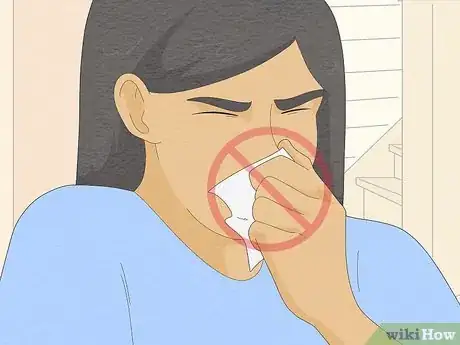
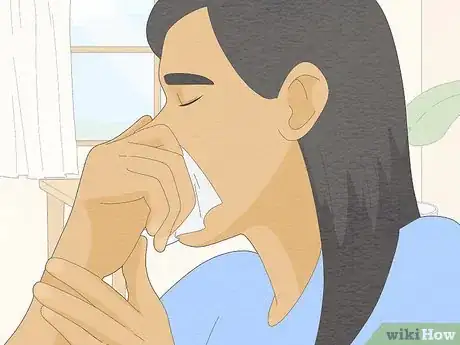
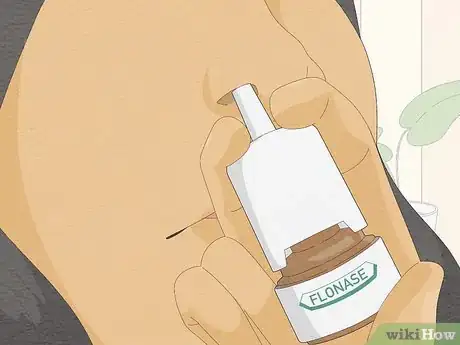


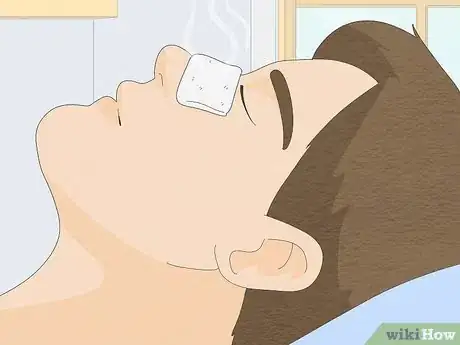
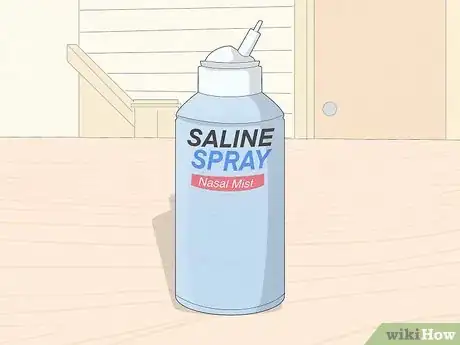
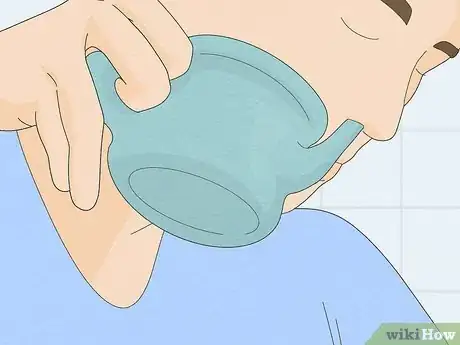
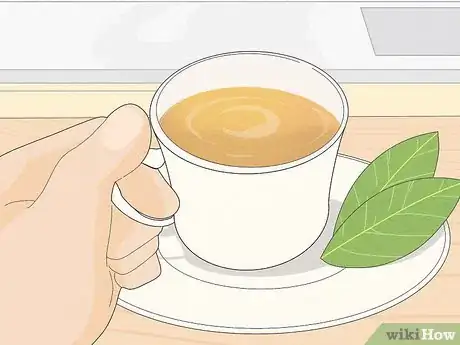

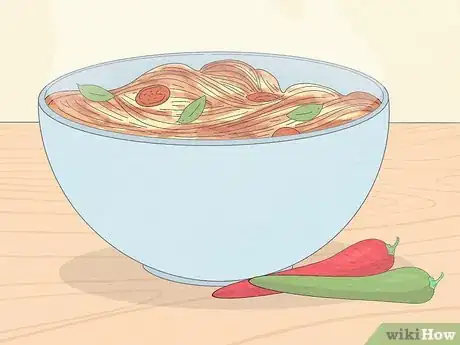
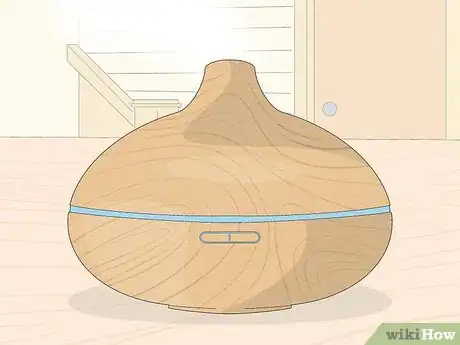





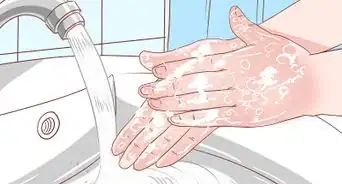


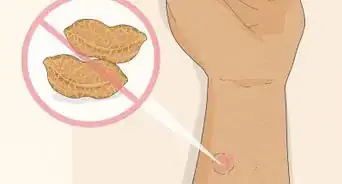

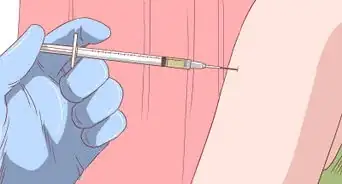



-Step-17-Version-3.webp)










